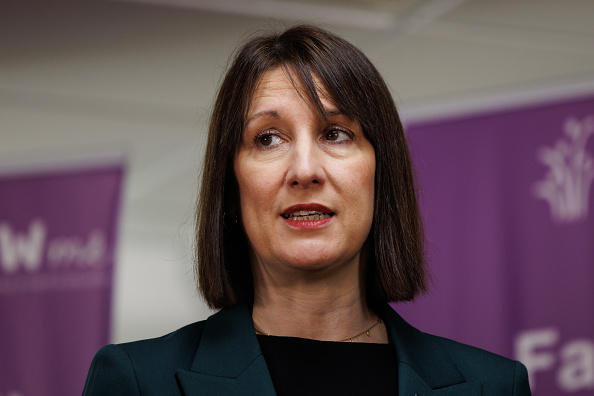Employers in the UK are rolling out workplace wellbeing strategies at an unprecedented rate, according to a new research report, ‘Employee Wellbeing Research 2017: The evolution of workplace wellbeing in the UK’ from Reward and Employee Benefits Association (REBA) in association with Punter Southall Health and Protection.
Nearly half (45 per cent) of UK companies have a clearly-defined wellbeing strategy in place, compared to less than a third (30 per cent) in 2016 – and 26 per cent have had a strategy for more than three years.
Of those that don’t, virtually all plan or wish to implement one – with 46 per cent planning on implementing one this year, 24 per cent in the next few years and a quarter (25 per cent) having it on their ‘wish list’.
What are wellbeing strategies?
More than a third (37 per cent) launched their wellbeing strategy to improve employee engagement, and just over a quarter (26 per cent) to improve organisational culture.
Other drivers included improving productivity levels (11 per cent), reducing long and short-term sickness absence (6 per cent and 5 per cent) and retaining talent (5 per cent).
Beate O’Neil, head of wellbeing consulting at Punter Southall Health and Protection said, ‘The jump in companies promoting employee health and wellbeing to improve their culture and engage employees demonstrates that wellbeing is no longer a ‘nice to have’, but an area of growing strategic importance.’
‘Whereas in the past many employers struggled to obtain budgets for wellbeing initiatives, almost two-thirds (65 per cent) of respondents with a wellbeing strategy now have a dedicated budget. The median annual spend per employee on wellbeing is between £51 and £75, which is encouraging.’
Spending on wellbeing is expected to rise fastest amongst organisations currently without a wellbeing strategy this year, as they play ‘catch-up’ and introduce initiatives to improve employee engagement and office culture.
Mental health is also included
Four fifths (86 per cent) of employers are focusing on promoting physical activity and 82 per cent on mental health in their wellbeing strategy. However, there is less emphasis on eliminating negative behaviours such as smoking, alcohol use and drug addiction – suggesting these need a more individualistic approach. Some employers also see this as only offering support to a few rather than the whole workforce.
The top wellbeing initiatives offered by employers are employee assistance programmes (89 per cent), followed by discounted or free gym membership (78 per cent) and health screenings (63 per cent).
Employers also claimed that employee assistance programmes (71 per cent) were the most effective for their business, followed by on-site medical support (66 per cent) and mental health support (56 per cent); employees on the other hand favoured free fruit (60 per cent), discounted or free gym membership (42 per cent) and on-site medical support (41 per cent).
Educate your staff
One of the fastest growing areas of wellbeing for 2017 is sleep management, with the number of companies including sleep in their wellbeing strategy set to double from 42 per cent to 88 per cent this year. The number of companies offering support for carers is also primed for a big jump (from 37 per cent to 83 per cent).
Financial education is another priority. More than a quarter of companies (27 per cent) plan to add financial education or guidance to their health and wellbeing strategy over the next 12 months, and almost half (49 per cent) will over the next few years.
Others will add ‘mindfulness’ sessions (39 per cent) and health/wellbeing apps for use on smartphones (43 per cent).
The number of respondents offering health and wellbeing apps on smart phones has more than doubled since last year, and they are now offered by almost one in five organisations – up from one in ten a year ago.
Similarly the number of employers providing access to a virtual GP has grown (16 per cent vs 12 per cent), as has the number offering wearable devices, such as pedometers or more advanced GP trackers (14 per cent vs 10 per cent).
Establish a communication strategy
When it comes to how employers are engaging their workforce, there are various approaches being used. The main methods of communication used are email (73 per cent), intranet (70 per cent) and posters and leaflets (63 per cent), whilst more than a quarter (26 per cent) had a dedicated online wellbeing website or portal and 25 per cent use wellbeing champions.
One of the most effective ways to get messages out is through line managers; however, only around a third (32 per cent) of employers train line managers to promote employee wellbeing.
O’Neil comments, ‘Having a wellbeing strategy in place is not enough – employers need to communicate the benefits, train line managers to support their programmes and use good technology to support their campaigns.
‘Many companies aren’t making the most of social media, apps, audio or video (podcasts or YouTube) and text messaging to communicate their initiatives. They could be missing a trick particularly in terms of engaging younger, tech savvy workers.’
Debi O’Donovan, director at the Reward and Employee Benefits Association, says, ‘We have witnessed a tremendous increase in interest in employee wellbeing strategies over the past few years, and a growing recognition of the business benefits it can deliver.
‘While for many employee wellbeing is primarily focused on physical and mental health, those at the vanguard are increasingly viewing employee wellbeing as the new total reward, the new employee engagement. This research highlights some of the exciting developments ahead and is a must read for all senior business leaders, and HR and reward professionals.’
Beate O’Neil, head of wellbeing strategies consulting at Punter Southall Health and Protection concludes, ‘It is clear that employee wellbeing is firmly on the agenda for many forward thinking organisations. A happy and healthy workforce is likely to be a more productive and engaged workforce, and looking after your employee wellbeing is a win-win for everyone.’





